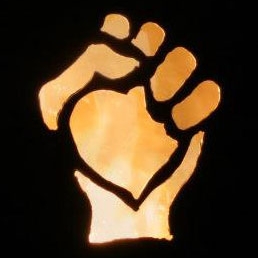
The Buddhist practice of receiving and accepting bad energy and sending out and letting go of one’s good energy is embodied in this prayer engine made of steel and fire. Kinetic human input – this breathing in and out, air and fire – is a visible, accessible amplification of Tonglen.
About The Tonglen Project
A placid face of segmented, polished metal, eyes calm and lips pursed, supported by a neck armature containing two volumes, a diamond and a heart. The top of the head is 16′ from the ground and the chin is 7′. Behind the mouth, inside the curve of the head is a diamond shaped combustion chamber and below it, just off the ground, a heart shaped bellows. A rod protrudes 10′ behind the head and joins to a levered handle, anchored to the ground so that a person acting on the handle will cause the bellows to expand and contract, forcing air through the combustion chamber and out of the mouth. Hot sparks from the burning wood will issue out on the exhale and the stoked combustion chamber will glow with heat, shining through the seams and incised writing on the face.
The base of the sculpture is made of five 4”x6” tubular steel arms anchored to the ground using screw type anchors. The neck and face substructure are rolled tubular steel 1” and 2” dia joined with ¼” plates and ⅜” and ½” bolts. The segmented face is stainless steel sheet welded to the tubular substructure, separable into pieces that two people can handle.
The heart/bellows is a rolled tube frame with a hardwood plank front and back and a welding blanket diaphragm. The wood is fire treated to resist ambient heat and falling sparks and embers. Steel flapper valves seal by weight and hanging angle.
The combustion chamber is diamond shaped and built from square steel tubing and 14ga steel sheet. It is stoked through a door in the back side that can load a 4’x4’ pallet, scrap wood or split firewood up to 24” long. Embers collect in the lower corner of the diamond. Air from the bellows enters through a stainless tube at the bottom of the chamber and exits at the top through a hard pipe extending to the mouth. Smaller perforations and gates are made in the upper surfaces of the fire chamber to allow ventilation, control the burn rate and limit emission through the mouth to only the exhalation that corresponds with acting on the bellows.









